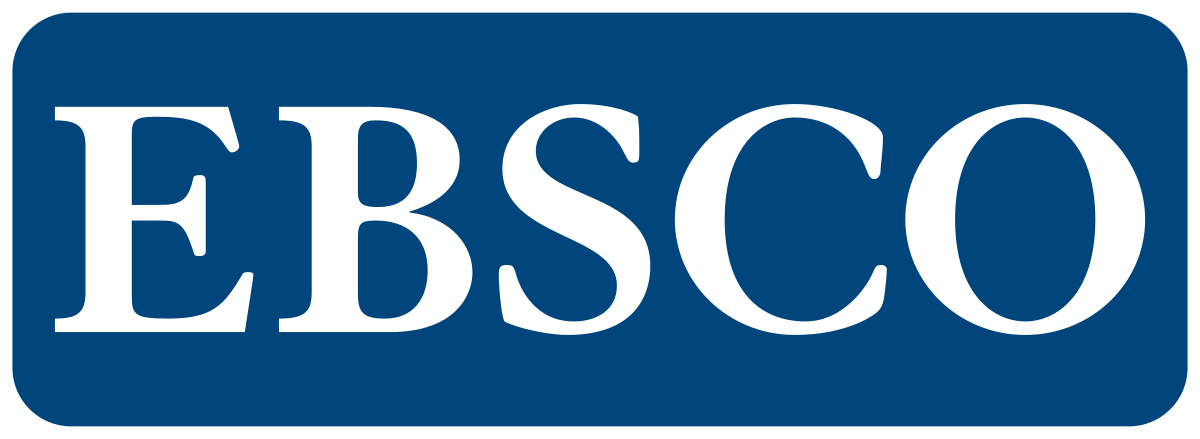Development of Floating Rice Cultivation Technology in Community-Based Peat Swamp Land
DOI:
https://doi.org/10.23960/jtep-l.v14i1.10-20 Abstract View: 439
Abstract View: 439
Abstract
Peat swamp farming has great potential to increase food security from local potential. One of the technological innovations of cultivation on peat swamp land is by applying floating rice cultivation. This study aims to assess the success rate of implementing floating rice cultivation technology on peat swamp land in East Kalimantan. The method used is participatory action research with the community in one of the villages in East Kalimantan, namely Minta Village, Penyinggahan District, West Kutai Regency. Floating rice was applied using a 1.5 x 6 m bamboo raft with a total of 40 rafts. The rice varieties used were SR (Sri Republik) Super Genjah 75 HST rice. The results of the study showed that the plant height reached 90 cm, with 32 tillers, and 32 floating rice panicles. The average grain yield was 30 grams/clump or equivalent to 5 tons/ha assuming land use efficiency of 80%. The obstacles in floating rice cultivation in peat swamp land are the presence of pests in the form of sundep in the growth phase and sparrows in the rice grain production phase. In an effort to accelerate the adoption of floating cultivation technology, intensive socialization and education are needed.
Keywords: Agricultural production, Cultivation technology, Floating rice, Innovation technology, Peat swamp land.
Downloads
References
Anshori, S. (2016). Rancang bangun quadcopter untuk pencarian rute optimum pada kebakaran lahan gambut menggunakan Metode Particle Swarm Optimization. [Doctoral Dissertation]. Universitas Islam Negeri Maulana Malik Ibrahim, Malang.
Budiman, I., Sari, E.N., Hadi, E.E., Siahaan, H., Januar, R., & Hapsari, R.D. (2020). Progress of paludiculture projects in supporting peatland ecosystem restoration in Indonesia. Global Ecology and Conservation, 23, e01084. https://doi.org/10.1016/j.gecco. 2020.e01084
Dumaresq, D., van Nguyen, K., Pittock, J., Oo, M., Sok, K., van Hieu, T., & Blessington, L. (2020). The paradoxical values of traditional deep water floating rice systems. Global Food Security, 26, 100391. https://doi.org/10.1016/j.gfs.2020.100391
Eni, M.A., Annisa, W., & Noor, M. (2016). Teknologi pengelolaan lahan rawa untuk tanaman pangan dan hortikultura dalam konteks adaptasi terhadap perubahan iklim. Jurnal Sumberdaya Lahan, 10(2), 103-114.
Hikmah, Z.M., & Pratiwi, G.R. (2019). Pengaruh pola jarak tanam dan umur bibit terhadap pertumbuhan dan hasil gabah padi sawah irigasi. Jurnal Penelitian Pertanian Tanaman Pangan, 3(2), 75-81.
Jurasinski, G., Ahmad, S., Anadon-Rosell, A., Berendt, J., Beyer, F., Bill, R., & Wrage-Mönnig, N. (2020). From understanding to sustainable use of peatlands: The WETSCAPES approach. Soil Systems, 4(1), 14. https://doi.org/10.3390/soilsystems4010014
Lupascu, M., & Wijedasa, L.S. (2021). Paludiculture as a sustainable land use alternative for tropical peatlands: A review. Science of the Total Environment, 753, 142111. https://doi.org/10.1016/j.scitotenv.2020.142111
Mujiyo, M., Irianto, H., Riptanti, E.W., & Qonita, A. (2022). Floating rice cultivation: A solution to reduce crop failure in flood-prone areas. International Journal on Advanced Science, Engineering and Information Technology, 12(3), 953-959. https://doi.org/10.18517/ijaseit.12.3.14665
Nasrudin, N., Isnaeni, S., & Ramadhan, R.A.M. (2023). Hubungan karakter agronomi dan hasil padi berdasarkan umur bibit menggunakan metode sawah apung di Kabupaten Pangandaran. Jurnal Agrotek Tropika, 11(3), 419-427. http://dx.doi.org/10.23960/jat.v11i3.6483
Oktania, A., Suyono, S., & Sutanto, A. (2021). Analisis kelayakan usahatani padi sawah apung pada lahan sawah rawan banjir di Kabupaten Banyumas. Jurnal Ekonomi Pertanian dan Agribisnis, 5(3), 762-775. https://doi.org/10.21776/ub.jepa.2021.005. 03.14
Paleckiene, R., Navikaite, R., & Slinksiene, R. (2021). Peat as a raw material for plant nutrients and humic substances. Sustainability, 13(11), 6354. https://doi.org/10.3390/su13116354
Prayoga, M.K., Adinata, K., Rostini, N., Setiawati, M.R., Simarmata, T., & Stober, S. (2018). Padi apung sebagai inovasi petani terhadap dampak perubahan iklim di Pangandaran. Prosiding Seminar Nasional dan Gelar Teknologi Padi, 269–280.
Presiden RI. (2014). Peraturan Pemerintah Republik Indonesia Nomor 71 Tahun 2014 Tentang Perlindungan dan Pengelolaan Ekosistem Gambut. Jakarta.
Rahmat, A., & Mirnawati, M. (2020). Model participation action research dalam pemberdayaan masyarakat. Aksara: Jurnal Ilmu Pendidikan Nonformal, 6(1), 62-71. http://dx.doi.org/10.37905/aksara.6.1.62-71.2020
Rina, Y., & Noor, M. (2021). Pengembangan Lahan rawa Berbasis Penguatan Sumberdaya Ekonomi Pendukung Kesejahteraan Petani. Balai Penelitian Pertanian Lahan Rawa (Balittra), Banjarbaru, South Kalimantan.
Riptanti, E.W., Irianto, H., & Mujiyo, Q.A. (2019). Efficiency of experimental scale floating rice farming in flood-prone areas. Ecology, Environment and Conservation, 25, 561-566.
Saleh, E. (2019). Adaptasi pola genangan air rawa lebak dengan budidaya tanaman padi mengambang di Desa Pelabuhan Dalam, Kabupaten Ogan Ilir. Jurnal Pengabdian Sriwijaya, 7(1), 703-709.
Samsudin, Y.B., Puspitaloka, D., Rahman, S.A., Chandran, A., & Baral, H. (2020). Community-based peat swamp restoration through agroforestry in Indonesia. In: Dagar, J.C., Gupta, S.R., & Teketay, D. (eds). Agroforestry for Degraded Landscapes: Recent Advances and Emerging Challenges, Springer, Singapore: 349-365. https://doi.org/10.1007/978-981-15-4136-0_12
Srivastava, A., Chun, S.J., Ko, S.R., Kim, J., Ahn, C.Y., & Oh, H.M. (2017). Floating rice-culture system for nutrient remediation and feed production in a eutrophic lake. Journal of environmental management, 203, 342-348. https://doi.org/10.1016/j.jenvman.2017.08.006
Sulaiman, A.A.S., Subagyono, K., Alimansyah, T., Noor, M., Muharam, A., Suwastika, I.W., & Subiksa, I. (2018). Membangkitkan Lahan Rawa, Membangun Lumbung Pangan Indonesia. IAARD Press, Jakarta: 153 pp.
Susilawati, A., Nursyamsi, D., & Syakir, M. (2016). Optimalisasi penggunaan lahan rawa pasang surut mendukung swasembada pangan nasional. Jurnal Sumberdaya Lahan, 10(1), 51-64.
Tanneberger, F., Schröder, C., Hohlbein, M., Lenschow, U., Permien, T., Wichmann, S., & Wichtmann, W. (2020). Climate change mitigation through land use on rewetted peatlands–cross-sectoral spatial planning for paludiculture in Northeast Germany. Wetlands, 40(6), 2309-2320. https://doi.org/10.1007/s13157-020-01310-8
Tata, H.L. (2019). Mixed farming systems on peatlands in Jambi and Central Kalimantan provinces, Indonesia: Should they be described as paludiculture. Mires Peat, 25(8), 1-17. http://dx.doi.org/10.19189/MaP.2018.KHR.360
Triadi, L.B.B. (2020). Restorasi lahan rawa gambut melalui metode rewetting dan paludikultur. Jurnal Sumber Daya Air, 16(2), 103-118. https://doi.org/10.32679/jsda.v16i2.677
Uda, S.K., Hein, L., & Adventa, A. (2020). Towards better use of Indonesian peatlands with paludiculture and low-drainage food crops. Wetlands Ecology and Management, 28, 509-526. https://doi.org/10.1007/s11273-020-09728-x
Wandansari, N.R., & Pramita, Y. (2019). Potensi pemanfaatan lahan rawa untuk mendukung pembangunan pertanian di wilayah perbatasan. Agriekstensia: Jurnal Penelitian Terapan Bidang Pertanian, 18(1), 66-73. https://doi.org/10.34145/agriekstensia. v18i1.29
Downloads
Published
How to Cite
Issue
Section
License
Authors who publish with this journal agree to the following terms:
Authors retain copyright and grant the journal right of first publication with the work simultaneously licensed under a Creative Commons Attribution-ShareAlike 4.0 International Lice that allows others to share the work with an acknowledgement of the work's authorship and initial publication in this journal.
Authors are able to enter into separate, additional contractual arrangements for the non-exclusive distribution of the journal's published version of the work (e.g., post it to an institutional repository or publish it in a book), with an acknowledgement of its initial publication in this journal.
Authors are permitted and encouraged to post their work online (e.g., in institutional repositories or on their website) prior to and during the submission process, as it can lead to productive exchanges, as well as earlier and greater citation of published work (See The Effect of Open Access).
Jurnal Teknik Pertanian Lampung

JTEPL is licensed under a Creative Commons Attribution-ShareAlike 4.0 International License.













